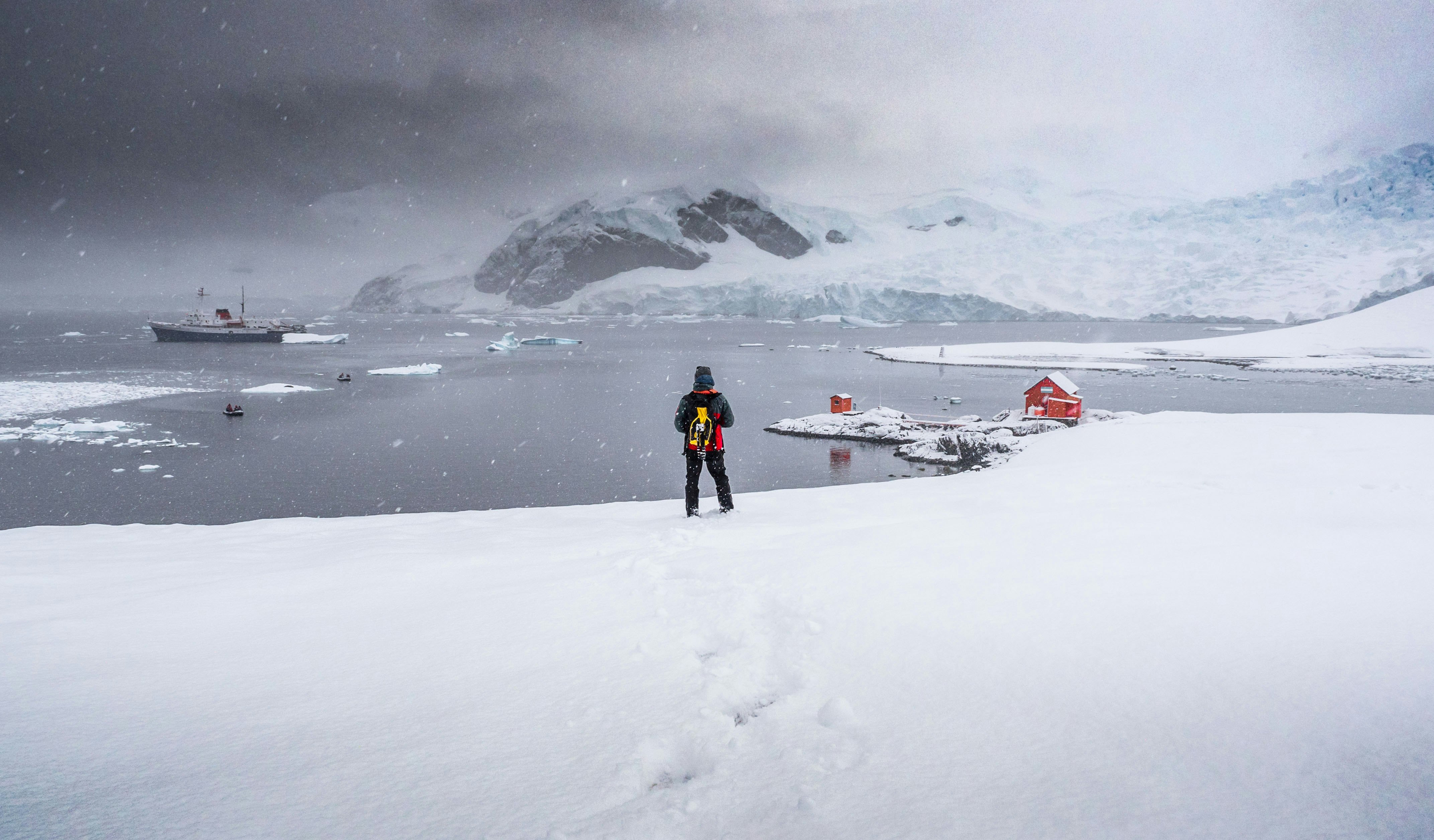
In quantum physics, the process involved in identifying a particle’s location changes the result. In Antarctica, the act of trying to research this unique environment can itself change the environment.
Steven Warren — a climate scientist at the University of Washington — recalls a technician at an Antarctic research station unknowingly smoking a cigarette outside, right in front of an intake vent meant to be collecting pure, unpolluted air. In another example, he explains that scientists once recorded snow depth as artificially high near a research station because the structure slowed the driving wind and held more snow in place. “It looked like there was a climate change,” he tells Inverse, but it was just the building. “You have to go quite a long way, several miles, to get away from the station’s influence.”
In a new study, published this week in the journal Nature Communications, a team of researchers has documented another way people are leaving a mark on the frozen continent: black carbon, or soot, from the combustion engines that power generators, snowmobiles, tour boats, and more.
What’s New — Soot, even a tiny amount, can induce a significant shift in local climate. Through their analysis and models, the study authors estimate that each individual sight-seeing visitor to the Antarctic Peninsula contributes about 80 additional tons of snowmelt annually, and each researcher about 600 tons.
The scientists sampled snow at 28 different sites, mainly around the Antarctic Peninsula — the warmest and most heavily visited part of the continent — and found that black carbon concentrations were considerably higher near tourist routes and research stations than elsewhere.
Black carbon absorbs light and heat, reducing snow’s reflectivity. The study scientists predict that the pollutant is causing local shifts in snow cycles. Through models, they estimate that snow in the affected areas is melting earlier in the summer and in larger quantities.
The amount of black carbon they found was small. Too small, in fact, to be visible to the human eye and an order of magnitude less than what’s been recorded in the Arctic, Himalayas, and elsewhere. But even a tiny amount of soot can change a lot. “It’s kind of like putting an LED light bulb in each square meter of the snow. It doesn’t sound like much, but that little bit of heat put off by lightbulbs placed every three feet apart can add up,” Mark Flanner, a climate scientist at the University of Michigan who wasn’t involved in the new study, tells Inverse.
Flanner says it’s been known for a long time that black carbon can darken snow and increase melting, but that this study is one of the first to quantify the impacts of that effect on Antarctic snow.
Why it matters — Elsewhere in the world, soot on snow is known to exacerbate global warming. However, the levels in Antarctica detected in this study aren’t enough to do that, say Flanner and Warren. For one, most of Antarctica is still too cold year-round for any snow to melt. And the pollution found is isolated to a small area. But it’s clear evidence that people are causing environmental damage, even in the most remote areas on Earth, says Flanner.
Charles Zender, an atmospheric physicist at the University of California, Irvine, who was uninvolved in the new research, agrees. “The fraction of Earth’s most wild, distant, and unexplored continent that is pristine is beginning to shrink. And that should be a wake-up call,” he tells Inverse. Although soot isn’t causing widespread ice loss in Antarctica yet, Zender points out it’s a possible risk in the future. “This black carbon accumulation is like a cancer,” he says. As the world continues to warm, the area of annual Antarctic snowmelt is increasing. “The black carbon on top of that makes the march of melt towards the South Pole that much faster.”
Both tourism and research in Antarctica have rapidly accelerated over the past decade, Raúl Cordero, the lead author of the new study and an engineer at the University of Santiago, Chile, tells Inverse. Tourists doubled between 2015 and 2020 alone, and the number of beds for researchers on the continent rose from about 1,000 to 5,000 between 1960 and 2020. These numbers are likely to continue increasing, says Cordero. Unless countries change how they power their research stations and travel companies move away from fossil fuels, the pollution will only worsen.
What’s next? — A few efforts have already been made to combat pollution in Antarctica. The International Maritime Organization banned the most polluting fuels from use in Antarctic waters in 2011, and some ships now use supplemental battery power to reduce emissions further. Belgium’s research outpost, built in 2007, is powered by renewable wind and solar. Yet much more is needed.
Cordero says he and his colleagues are less interested in further confirming what they say are conclusive results —that soot is a growing issue in Antarctica — and more interested in pushing for a rapid energy transition to renewables. “I think we have managed to answer one of the open questions regarding the black carbon there. Now what we should do, rather than working on more studies, is focus on the solution,” he says. “It’s a moral thing. This is the last unpolluted site on Earth,” he says. “We people working there, visiting there, have the responsibility to do better.”







